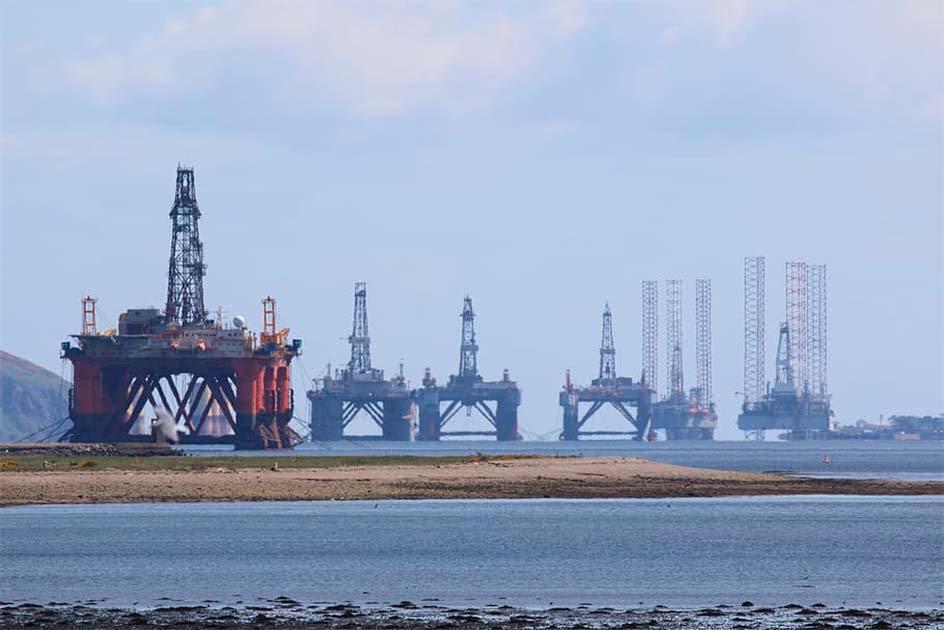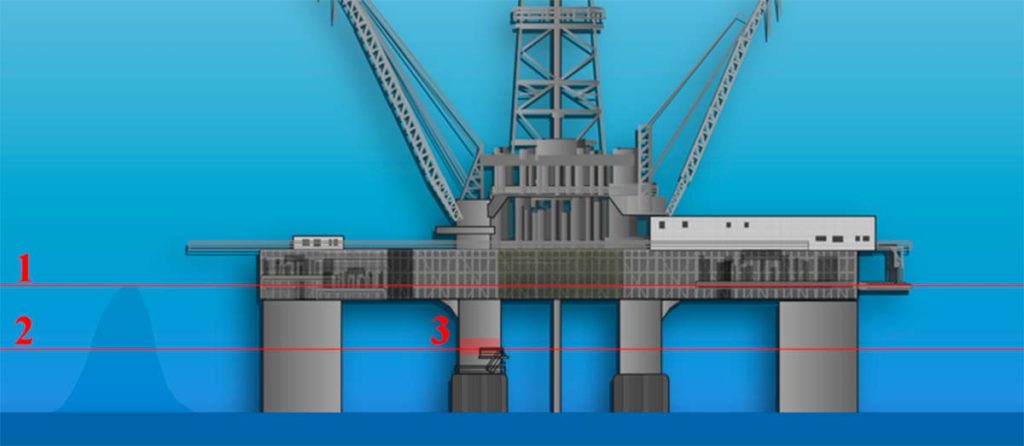At exactly 7pm on 14 February 1982, the Sedco 706 semi-submersible oil platform was working in the Hibernia Oil Field in the north Atlantic when something unexpected happened. The giant platform, one of three in the area, was hit by something.
When the crew have recovered they tried to ascertain what had collided with them. They also received communication from another platform in the area, the Ocean Ranger, saying that they too had been hit, and that a window had been broken.
Sedco 706 quickly recovered and operated normally through the night, and it seemed that Ocean Ranger had also righted herself. But then, just before 1am in the middle of the night Ocean Ranger sent out a sudden Mayday call: she was listing heavily and could not maintain her balance. She was in danger of sinking.
The crews of the surrounding platforms, as well as the standby craft for Ocean Ranger, were alerted to the problem, but it would be no use. Fewer than 30 minutes after the first Mayday call, Ocean Ranger would transmit her last message. Sinking to the bottom of the ocean in the deep dark of the Atlantic winter night, the 84 souls aboard were all killed.
Whatever had killed Ocean Ranger was not done, however. The next day, further out to sea in the Atlantic Ocean, the Soviet container ship Mekhanik Tarasov was also struck. The freighter survived for several hours before she too sank, with the loss of 32 of the 37 crew.

What was killing these vessels? What monster was being conjured from the ocean depths with the power to drag down a mighty oil platform?
The Ocean Ranger
First, it is important to appreciate the weather of the area. The Hibernia Oil field was in the far north of the Atlantic Ocean, and it was prone to high waves and severe storms. If the oil companies were going to start digging into the oil field, they had to ensure that the drilling equipment was safe and the people involved had appropriate safety gear in the field.
- What Happened to The Zebrina? Ghost Ship of the Great War
- U-Boat 85 and the Sea Monster: Terror from the Deep
Certainly everyone thought the Ocean Ranger was safe. The Ocean Ranger was a self-propelled, semi-submersible offshore drilling rig, famous for being the largest of its kind when it was launched in the year 1976. These rigs were mobile and sat on large, ballasted pontoons effectively operating like large, static ships.
The Ocean ranger was, therefore, a floating rig. A floating rig is protected from winds and waves and is not as unstable as the surface ship, but it is still afloat.

The drilling of the Grand Banks was not the first drilling assignment for the Ocean Ranger. It had also been drilled off the coast of North America and was trusted by oil companies. In November 1980, the drilling rig started functioning on the coast of Newfoundland.
That night, Ocean Ranger was hit by the full force of mother nature. On 14 February 1982, the Ocean Ranger was drilling the Hibernia well J-34. There were 84 men on the floating rig, and out of them, 56 were locals of the area.
That morning, the people on the rig got news that there was a storm coming in. According to the weather report, the winter storm was to have winds of 90 knots and waves of up to 37 feet (11 m). The people on the rig decided to ride the storm out.
Later, it would be shown that this was a fatal move. The Ranger continued to drill at the location for the day until 4.30 in the afternoon. After the drilling was done, the rig was disconnected and prepared for safety.
The storm was at its height by 7pm and it continued to wreak havoc all night. For most of the night, everything was under control. However, the waves that came up because of the storm were unusually large. There were other nearby rigs, too, that reported being hit by the waves.
These enormous waves were what had hit Sedco 706, and the crew of this rig had to work through the darkening night to ensure she was safe. Ocean Ranger was also hit at the same time, and as mentioned above reported a broken window as a result of being struck. The problem was that the broken window was that of the ballast control room.
This room was essential to effective operation of the oil rig, especially in heavy seas. The ballast controllers managed the overall balance of the platform, by controlling the relative mass of the pontoons on which Ocean Ranger floated.
The room was also filled with sensitive electronics and situated very low down on the rig. It seems that once the room was swamped by an enormous wave and the window broken by the force of the water rushing in, switches and controls started working on their own.

For 90 minutes until 9:00pm, the crew of Ocean Ranger worked to clear up the debris and the water rushing in, and there were no serious concerns. However, at 1:00am the next day, the Ocean Ranger contacted the shore to report that it was listing. The ballast control, so essential to the running of the rig, had malfunctioned and the ship was tilting heavily, threatening to capsize.
Later that night, the rig also contacted its emergency supply vessel to move in closer because there could be possible problems and an urgent need for rescue. By 1:1am, the situation had escalated, and the rig was sending Mayday calls for rescue. The last distress message from the rig came at 1:30am when the radio operator was sending the crew toward lifeboat stations so that they could leave the rig.
The two nearby rigs to the Ocean Ranger were sending their standby vessels to help the crew of Ocean Ranger. However, the waves and winds were so huge that the vessels could not reach the area on time. Searching for people in the stormy sea water was also a major problem because the water was so turbulent. At 2:21am, the supply vessel got a signal from a lifeboat of the rig and tried to rescue the men aboard.
However, the line that was extended to the men snapped in the waves, and the lifeboat capsized before the first mate could save even one of the crew members. Ocean Ranger was still afloat, but it was listing very fast. There were no signs of people on it when supply ships could reach the rig. All the people had fled by lifeboats, but the tiny lifeboats were lost to the raging waves of the sea.

Shortly after 2:45am on Monday, 15 February 1982, the Ranger sank, and nobody could be saved. Although there were rescue efforts that happened the next day and night, no one could be recovered. The lifeboat that the supply vessel had tried to save was seen again, but it floated away and was never found. The rescuers could only find 22 bodies in the seas. All the people whose dead bodies could be found had died of hypothermia and drowning.
The Mekhanik Tarasov did not even receive this help. Alone in the Atlantic when she was struck, perhaps by the very same rogue wave that doomed Ocean Ranger, her few survivors had to wait for rescue, and to tell what they had seen.
Top Image: Ocean Ranger was struck by a rogue wave which destroyed her ballast control, dooming her. Source: David Fuentes / Adobe Stock.
By Bipin Dimri